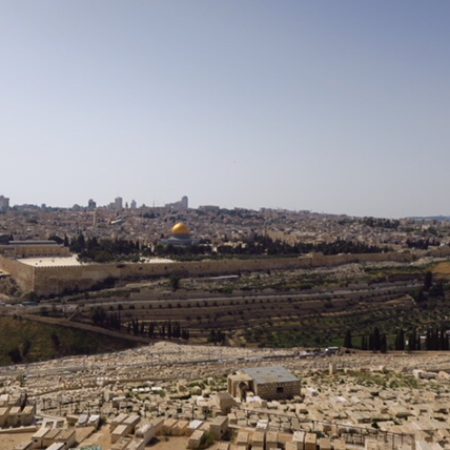We began the morning with several hours of classroom time reviewing the areas we visited yesterday and beginning to learn about teaching methods. This morning focused on using questions as part of the teaching process, specifically centered on using events and interactions in Scripture and the Holy Land as a foundation for these questions.
About mid-morning we drove from our Kibbutz (more on these later) outside of Jerusalem to Nami Samwil, more recently determined to be the site of Mizpah. This is traditionally the site of the tomb of Samuel, and there is currently a mosque on the site. However, the site actually has nothing to do with Samuel’s burial, as he was actually buried at Ramah. The site was, however, a spectacular place to view the Central Benjamin Plateau (CBD) from the roof of the mosque. The CBD includes such cities as Bethel, Ramah, and Ai. Jerusalem is visible to the south. This plateau is an important east-west route from the coast to Jericho. In fact, the upper reaches of the Aijalon Valley, discussed yesterday, terminate at this plateau.
We stopped for lunch at the bustling central market of Jerusalem. It was particularly busy, as this evening was the beginning of the Jewish Sabboth. From sundown on Friday to sundown on Saturday, Jews celebrate the Sabboth, and do no work, including cooking. Therefore they typically shop on Friday and cook ahead for the Sabboth. Fresh fruit, fish, breads, nuts, and dried fruits dominated this crowded market. Picture the State Fair on its busiest day, multiply by about two, and you get the picture.
To prepare for our evening trip to the Western Wall this evening, we visited the Mount of Olives, which lies east of Jerusalem on a hill across the Kidron Valley. This site is found throughout scripture, but probably best known as the site of Jesus’ ascension. Today we focused on the Temple Mount and old city of Jerusalem, which are easily visible from there. The scale of the Temple Mount is hard to describe, and before its destruction in 70 A.D. must have been incredible. As it is, it is an impressive architectural and engineering marvel. The largest foundation stones of the temple walls weigh 580 tons. For comparison, the blocks of the Egyptian pyramids weigh up to only 18 tons!
The Jewish Sabbath started at sundown tonight, or about 7pm. Thousands of Jews come to the plaza along the Western Wall (which is a portion of the original temple platform wall) to celebrate by singing, dancing, and praying. After taking in this scene we walked through the old portion of the city to the Chapel of the Holy Sepulcher, where (or very near where) Jesus was buried. Both the chapel itself (Greek Orthodox) and the tomb monument were moving to see.
As we hear winter has not yet left Minnesota, we are happy to report that it has been sunny and in the 70’s here! All for tonight.
In Him,
Pastor Matheny and Matt Brand
View this post HERE to comment or discuss on our facebook page.
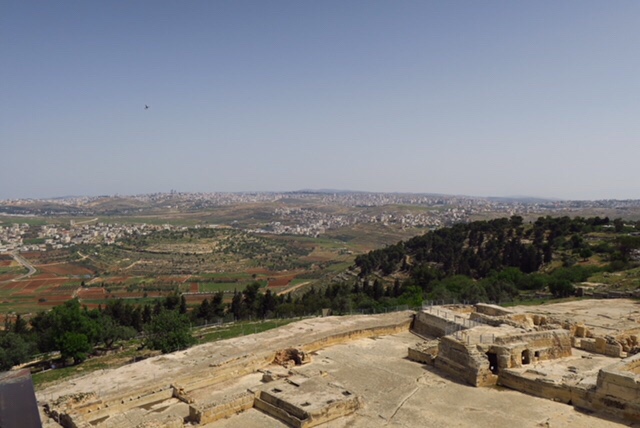
Looking towards the Central Benjamin Plateau (Bethel and Ai) from Mizpah
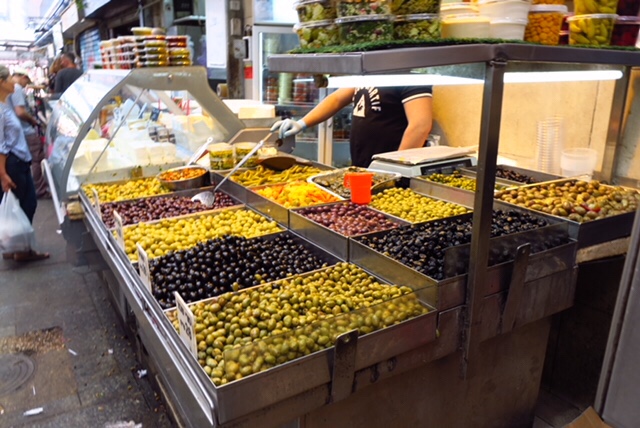
Olive vendor at the market
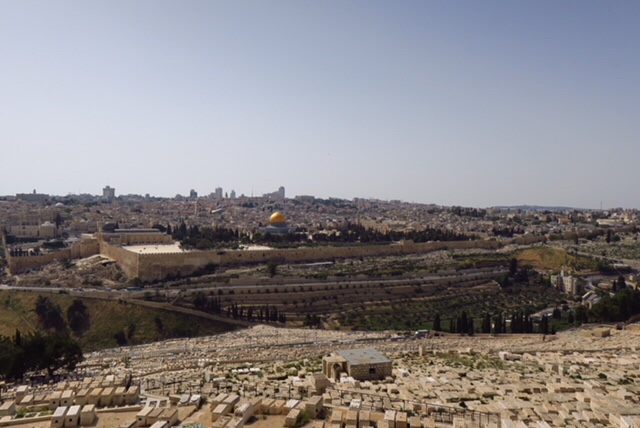
The Temple Mount from the Mount of Olives
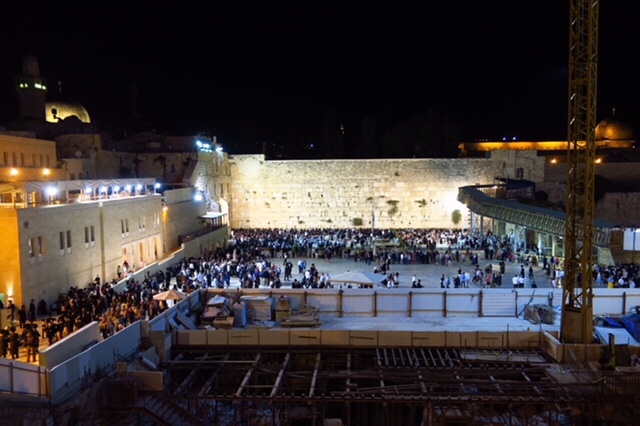
Jews celebrating the Sabbath at the Western Wall (with current archaeological excavations in the foreground)

